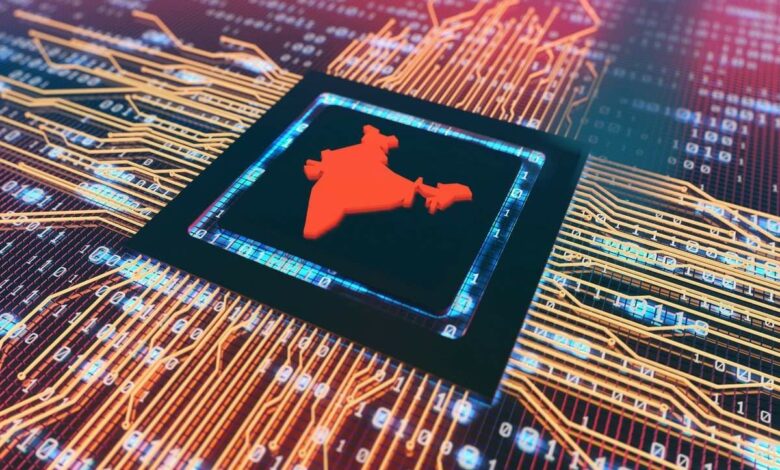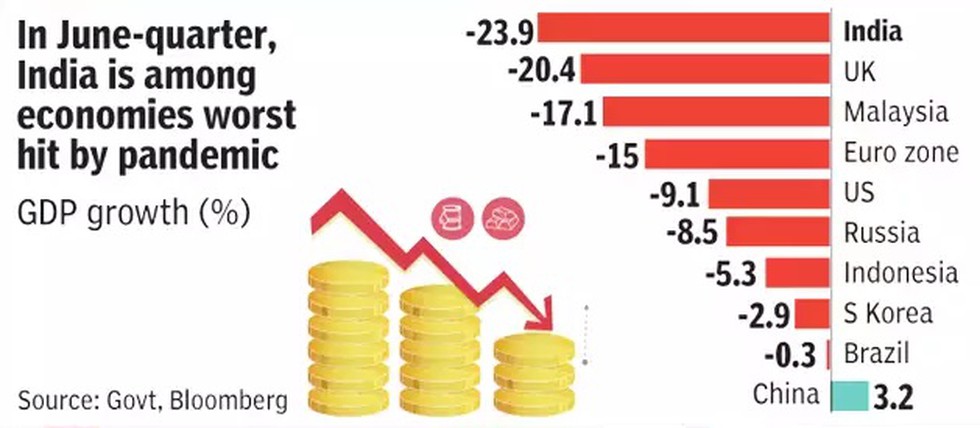
In the coming month, India’s Finance Minister Nirmala Sitharaman is expected to present India’s new budget which she has heralded as “a Budget like never before”. 2020 has been a historic year for almost everyone. It brought with it several unexpected and unanticipated downturns, changes and new opportunities that we did not even know existed and before this year full of surprises like never before the end, there are certain questions that demand answers on the way forward.
The pandemic has thrown us all in wells of deep uncertainty and whether the “never like before” Budget or any policy intervention by the government in the coming months, can probably compensate or rejuvenate the Indian economy is a big question mark. The underwhelming fiscal stimulus-response also leaves us at unconnected ends to the future expectations after the situation brought about by the pandemic.
There are also uncertainties circumventing around the potential rebound in the economic growth of India as well as of the whole as a whole. The consumer sentiment, the employment outlook remains weak even as industrial output picked up after the reopening of the economy reopened. The demand was encouraged and buoyed by pent-up on account of the festival season bringing a spending boost.
The household incomes continue to be sub-optimal while stimulus-fuelled investment flows from the United States and Europe have brought back risk appetite in the Indian investors. The investors now seem to deluge from safe-haven assets such as gold into more risky and volatile stock markets and emerging market economies.
Right now, it feels that all this has made India a net gainer with humungous growth prospects ahead. But again, the potential still remains unexploited with a huge chance of backfiring. The real economy struggles may incorporate a structural disconnect of epic proportions, inflation and mass income inequality.
What all that happened this year in pandemic was good for the economy?

Talking about the positives, we have many, even if this year was considered as one of the major economic shock givers.
The biggest positive news we have encountered is that India is slowly and gradually bending the Covid curve and since mid-September infections have slanted downward every week while the recovery rate stands at a relieving 95 per cent. The potential vaccines are making to the headlines every other day and hopefully, India shall not remain behind in the race of approving one.
If we were to analyse sectors individually we may notice that many of them have outperformed their own prior records with Healthcare, Information Technology (IT), and Fast Moving Consumer Goods (FMCG) companies being seen as a bright spot. The digital technologies are sighting stronger earnings and positive growth outlooks post-Covid.
Moreover, the sectoral split indicated that markets that were hit hard by the harsh lockdown implemented to contain the coronavirus such as auto and capital goods could be seeing a turnaround in forwarding earnings.
Even though the scare of the new wave of infections as well as new mutants of the coronavirus keep freaking out the economic projection, the outcome of the US presidential election and its financial aid package, termination of Brexit negotiations after years of wait, and positive news on vaccines could balance and encourage the prospects of the global economy.
Equity markets have surged past previous highs lately as more and more people divulge towards investing. The markets maintained a volatile position due to rallies and sell-offs up to early November and on a year-to-date basis, the S&P BSE Sensex and Nifty50 have surged over 13 per cent and 12 per cent respectively till December 20, 2020.
According to the Institute of International Finance, investments to emerging market economies stood at as much as $76.5 billion in the month of November alone. In fact, this amount is almost equally shared by equity and debt staying at $39.8 billion and $36.7 billion respectively. The projection of the fourth quarter of 2020 remains to be the strongest quarter for EME inflows since the inflows recorded in the first quarter of 2013
NSO GDP data release: The data released by the national statistical organization (NSO) for the quarter ended October 2020 in regards with the country’s gross domestic product (GDP) came as a fruitful surprise for the Indian investors. The numbers were not as bad as predicted by the majority of the organizations and agencies making the downturn in Q2 turning out to be shallower. The pace of recovery exceeded the predictions pointing to a pick-up in economic momentum

What are the red flags or downturns that our economy has faced?
Needless to say, the coronavirus pandemic has not been very good on India’s financial and economic conditions. The following factors still pose to be a major hindrance in economy revival in the coming months, or maybe even years.
Fiscal limitations of the state and the centre: Since the beginning of the fourth quarter of 2018-19 India’s growth has not been very astounding. The government’s reluctance, or inability to introduce major fiscal aids and do the heavy lifting may come out to be problematic. Fiscal limitations, which would continue to be a challenge, affect the sentiment booster and may as well trigger the government to catalyse the wider investment drive.
The problem of fiscal limitation is not going to be rectified quite easily and soon given that the Centre’s gross tax receipts are projected to fall by over 10 per cent in 2020-21 while the Non-tax revenues already appear to be bleak. This comes on top of the 3.4 per cent slide already seen in the tax receipts during the fiscal year 2019-20. The states too are loaded with heavy expenditure on health services while being in a tussle with the Centre over GST payouts.
Demand: The Consumer Demand conditions still remain weak as the economy records a steep downfall in exports and imports reflecting the state of external and domestic demand. According to the November RBI Consumer Confidence Survey, the consumer confidence was lower in November compared to the same period a year ago.
Policy weakness: Policies still do not seem strong on both the demand and supply sides pointing to a reluctance of central and state governments to sustain or increase the fiscal spending in order to boost and balance the fall in investment demand.
Employment imbalance: The pandemic led to massive job losses in the economy, especially in the Micro, Small and Medium Enterprises (MSME). The data released by CMIE jobs points to worrying trends; The Q3 of the fiscal year 2020-21 is expected to terminate with 395 million people employed, which would be 2.5 per cent less than the 405 million employed in the December 2019 quarter.
Even after the restrictions were lifted, many people could not get back to their older jobs and went on to leave the labour force. Furthermore, the data by CMIE also hints at the fact that the month of August shows that the biggest losses in employment come in the segment of quality jobs, that is, salaried employment with women being more impacted than men.
Uncertainty in Recovery: The sectors or services which could not function without physical touch such as hotels, salons, restaurants and airlines are among the worst hit. These sectors were doing exceptionally well pre covid and are expected to struggle till the time we return back to our normal, which might not be so soon.

According to the estimates by the International Monetary Fund or IMF, the Indian economy is expected to face a contraction of 10.3 per cent in the current fiscal year followed by a growth percentage of 8.8 per cent in the year 2021-22. But even with these growth prospects, the GDP may take as much as two years to get back to pre-pandemic levels.
Inflationary concerns: Inflation has been scaring economists in India with the Reserve Bank of India highlighting the risks from continued high inflation in its December monthly bulletin. The report by RBI stated: “…Efforts need to be redoubled to excoriate the ‘worm in the apple’ (inflation) before it hurts the impulses of growth that are taking root”.
Furthermore, Nomura, a rating agency, also states that the retail inflation is not likely to fall enough for the RBI to drop-down rates in the year 2021 and the inflation may heat up again over the medium term. In such a scenario, the RBI would have to ultimately resort to further hiking of rates in 2022 as well.




